GEOTECHNICS
Through its specialised subsidiaries, Sol Conseil and Soler Conseil, the Builders & Partners group can rely on over 35 years’ worth of know-how in the field of geotechnics and hydrogeology across projects of all descriptions in construction, civil engineering, development, highways and railways.
It is proud to be highly responsive thanks to:
- 50 geotechnical, hydrogeological and civil engineers and technicians
- 17 operational teams capable of carrying out in situ boring and testing
- the group’s integrated testing laboratory
Services
GEOTECHNICAL ENGINEERING :
Assignments G1 – G4 comprising studies and performance monitoring for:
- Retaining works
- Earthworks
- Grouting
- Quarry consolidation
HYDROGEOLOGY
- Project Management Assistance, Flood Risk Management Plans (“PPRI”)/French Water Act compliance
- Infiltration feasibility studies
- Highest Water Level studies (“NPHE”)
- Characterisation of aquifers
- Pumping system design
- Optimisation hydraulic (ground water) cut-offs diaphragm walls
- Groundwater depletion monitoring
ON-SITE WORKS AND TESTING
- Boring
- In situ testing
- Water testing
- Installation of sensors
- Logs
ROUTINE LABORATORY TESTING
- Assignments G5 involving diagnostics
- Soil laboratory
- Highways laboratory
- Highways and earthworks engineering
- Geomechanical testing
CONTAMINATED SOILS AND SITES
- Contamination detection, mapping, quantification
- Human health risk assessments
- Monitoring of site remediation and rehabilitation
Lines of business

LINEAR STRUCTURES
Paris de Tramway
The project for a new tramway line around the south of Paris we worked on covers 7.9 kilometres from Pont de Garigliano in the 15th arrondissement to Porte d’Ivry in the 13th arrondissement. The whole stretch is marked by the presence of old underground limestone quarries which are between 10 and 25 metres deep. The highly-challenging investigations, carried out along the route, served to assess the state of the quarries and thus define the works necessary to make the site safe, mainly through the use of injections. We carried out the geotechnical studies ahead of the project under the management of the General Inspectorate of Quarries and designed the structures to ensure zero risk of subsidence or collapse.
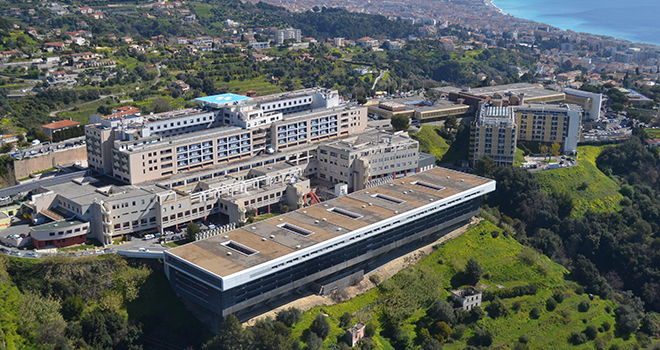
BUILDING CONSTRUCTION
Nice Hospital
We carried out probe drilling and geomechanical testing, in addition to core sampling to determine the nature and characteristics of the land.
We were thus able to design the foundations, retaining structures, and ascertain the dynamic characteristics of the soils to be taken into consideration for seismic effects.
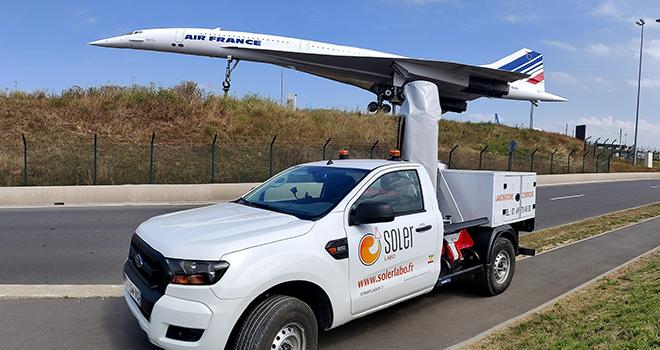
ROADS NETWORKS EARTHWORKS
Roads
Construction and renovation of road infrastructure requiring specialist engineering, precise sampling and testing to ensure accurate representativeness of the environment of the construction envisaged.
Soler Labo performed modelling and proposed the best technical solutions to suit the specific needs of the party who placed the order. As always, we gained perfect understanding of the three key aspects of the project, i.e. time, budget and complexity, to manage the works as efficiently as possible.
Soler Labo ensured maximum reuse of existing structures, performed remaining life calculations, determined the level of damage of the road structures. Soler Labo proposed the use of innovating materials. Based on studies performed in the lab, Soler Labo highlighted the advantages and disadvantages of the reuse of soil with low levels of contamination (following SETRA – French Roads, Transport and Development Services – recommendations) and recycling materials (non-hazardous waste incineration clinker – “MIDND”, recycled gravel, slag, etc.).
We managed the whole endeavour, from defining requirements (explicit and implicit), the “DICT” (declaration of intent to carry out works in proximity of services) & the setting out survey (in accordance with regulations), carried out tests, both on-site and in the lab., modelling, produced reports and presentations.
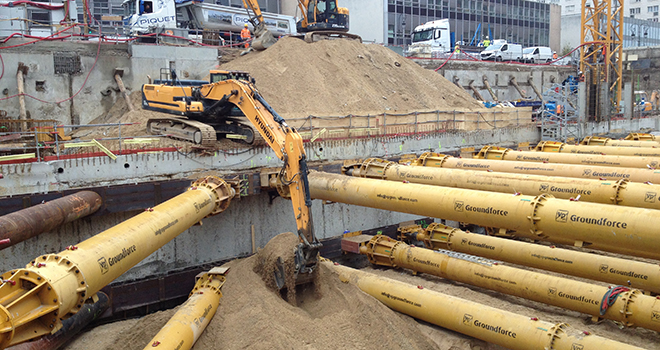
HIGH-RISE BUILDINGS
Eria Tower
Within the context of the redevelopment of the Bellini district in Puteaux, Soler Conseil carried out geotechnical design and works supervision studies for the Eria Tower. The building has 13 overground levels for use as office and retail set over 5 basement levels. The design of the substructure took numerous geotechnical issues into consideration, including the presence of sand below the water table over the 17 meter depth of earthworks in a high-density urban context. A diaphragm wall with a cut-off at a depth of 35 metres in addition to foundation piles of up to 188 cm in diameter anchored 55 metres below street level were required for the construction of this project.
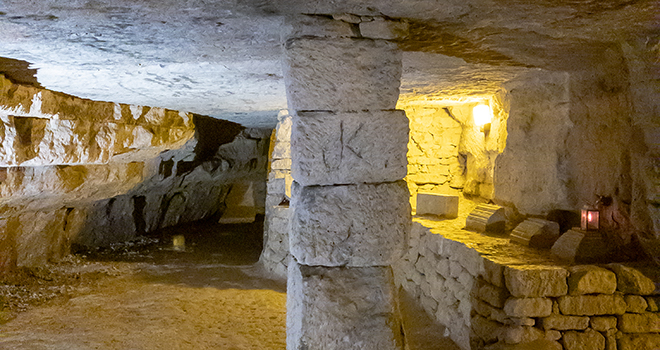
QUARRIES
Underground cavities may exist, putting the stability of existing or future structures at risk. The cavities can be naturally-formed (gypsum dissolution, karstic features) or artificially-formed (old open-air or underground quarries). To envisage building, they have to be consolidated and filled in. Consolidation involves the building of masonry posts. Boring is carried out to inject filling into other cavities. We carry out sampling to determine the nature of any voids, draft tender documents, monitor and sign off on the works proposed. Where filling is involved, we carry out test drilling.

BUILDING RENOVATION
Crillon Hotel
This luxury hotel, operated by the group, closed to the public on 31 March 2013 for 4 years for major renovation works, including the creation of a second basement level designed to house a spa and a swimming pool. Digging a second basement level below the water table in sandy terrain represented a real challenge. The underground worksite, 90 metres long by 30 metres wide was quite an achievement. Two floors were created and all without the original facades, which were built in 1758, budging an inch. We performed the diagnosis, designed the underpinning and monitored the works, prior to the overall renovation of the building.
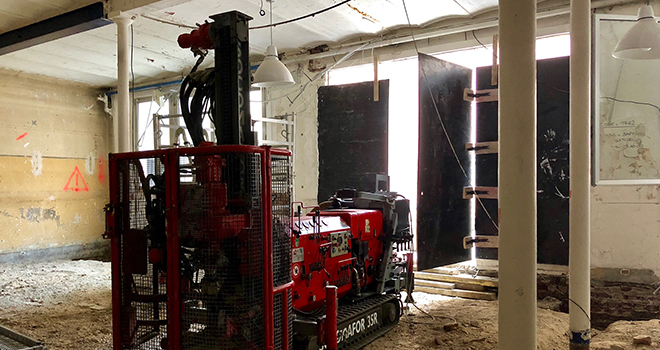
BORING
We drill probe holes with a diameter of between 63 and 200 mm using one of the following techniques, depending on the nature of the land:
- Dry continuous-flight auger drilling for clay and marlstone.
- Hollow stem auger drilling for loose, muddy ground.
- Simple rotary drilling with bicone or tricone bits and injection of biodegradable mud or water for moderately compact ground.
- Rotary percussion drilling (out-of-the-hole hammer) and injection of biodegradable mud, water or air for coarse, compact ground.
Ground cutting is determined based on materials brought up by the drilling “fluid” (mud, water or air) and the samples taken using a core sample drill.
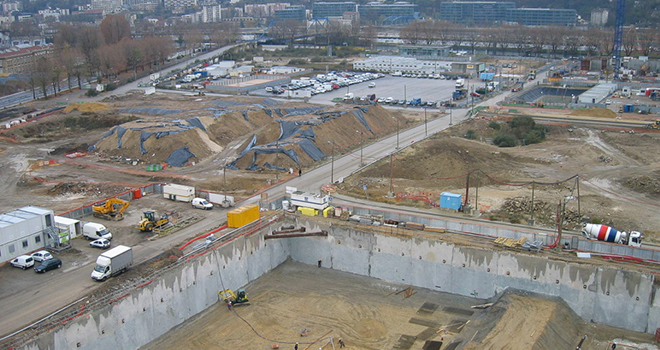
NEIGHBOURHOOD CONVERSION
Olympic village
For this 48,000 sqm. project located on the banks of the River Seine and designed to accommodate 3,000 athletes for the Olympic Games, Soler Conseil and Soler Environnement carried out geotechnical studies and diagnosis of soil pollution. When the Games are over, the site will be converted into housing for first-time buyers. When it came to boring, the teams at Soler Conseil were confronted with a major challenge due to the risk of explosion (presence of old munitions buried in the ground). Each borehole required the implementation of specific measures to manage the risk of explosions.
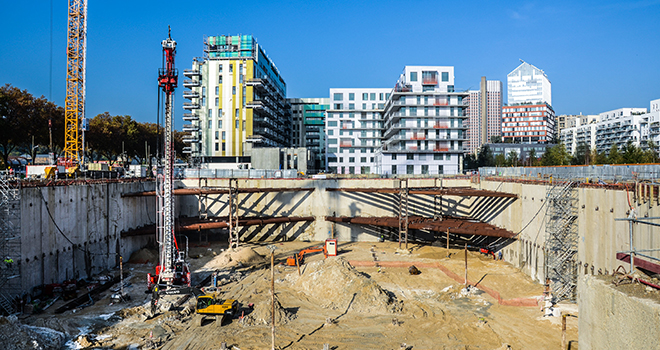
IN SITU TESTING
The services we can provide include, inter alia:
- Pressuremeter testing – predominantly recognised in France, is a way of determining the dimensions of foundations, whether they are strip, pits or piles. It also makes it possible to estimate the settlement of the foundations.
- Penetration test. This test is very useful for probing shallow soil since it can define the characteristics of 10 cm-deep layers of soil. It also makes it possible, by correlation with the pressuremeter, to design shallow foundations. Very useful test for loose soils.
- Standard Penetration Test. This is an alternative test to the pressuremeter test. It is useful for calculating the dimensions of foundations of all types. It is worth noting, however, that the French code of practice issues certain reservations re. its use for the design of pile foundations. It is not a way of calculating settlement, but does make it possible to take samples at each test depth.
- Phicometer shearing test. This is used to determine cohesion and the angle of friction of the ground in situ and thus avoids i) laboratory testing and ii) having to employ expensive, heavy-duty boring machines such as core drills. Thanks to the phicometer shearing test, we obtain more reliable results because soil measurements are taken on site and the method is inexpensive because there is no need for heavy-duty machinery nor laboratories. This test is only suitable for relatively good quality, homogeneous soils.
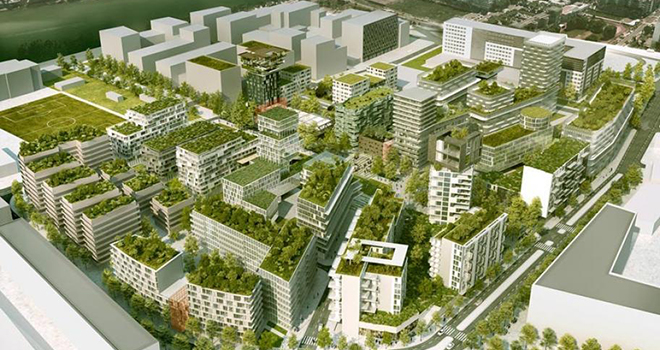
HYDROGEOLOGY
Development of the Parc d’Affaires mixed development zone in Asnières
Within the framework of the development of the Parc d’Affaires mixed development zone in Asnières, provision of guidance and support to Eiffage Immobilier with issues relating to the hydrogeology of the zone. Determination of the hydrogeological characteristics, estimation of the flow rates produced in each parcel, definition of regulatory context, provision of guidance and support in discussions with the urban developer in respect of updating compliance with French Water Act requirements, monitoring of flow rates and water quality throughout performance of works on the different parcels.
What they say

ROMUALD VAN CAUVENBERGHE,
Director, Earthworks – Highways – Laboratory Division
The Highways-Earthworks division is proficient in all types of infrastructure, from cycle paths to airport runways, private roads (logistics platforms), public highways (main roads, secondary roads, local roads). Bolstered by its integrated laboratory, our division will provide you with expert guidance and support in relation to your choice of materials and the best way of implementing your project. We examine, design and optimise structures. We anticipate maintenance imperatives and optimise site performance. Finally, we monitor performance of the works until their satisfactory completion.


ADRIEN SIMON,
Director, Hydrogeology Division
Why perform a hydrogeological survey?
Because it is essential for risk management and the techno-economic optimisation of an operation. It ensures compliance with the regulatory context. It provides understanding of flooding risks and the ability to address them. It is a vital element in the design of structures (foundations, walls, tanks, sump pumps, etc.), in the optimisation of diaphragm walls and the calculation of pump flow rates.


SYLVAIN BERGERONNEAU,
Director, Brittany Offic
Thanks to our diversified terms of engineers specialising in geology, hydrogeology, chemistry, biology and, more widely, through our belonging to the Builders & Partners group, we bring you the most extensive portfolio of services on the market in terms of diagnostics, expertise and assistance.


PASCAL CAPORALI,
Technical Geotechnical Director
Our teams of geotechnical technicians and engineers are passionate about their trade. Whether they are working with their clients on basic or highly complex projects, whether designing foundations or slabbing, optimising earthworks or consolidating quarries, designing underpinning, walls or structures, they work with the same levels of commitment from the design stage right through to monitoring performance of works.

